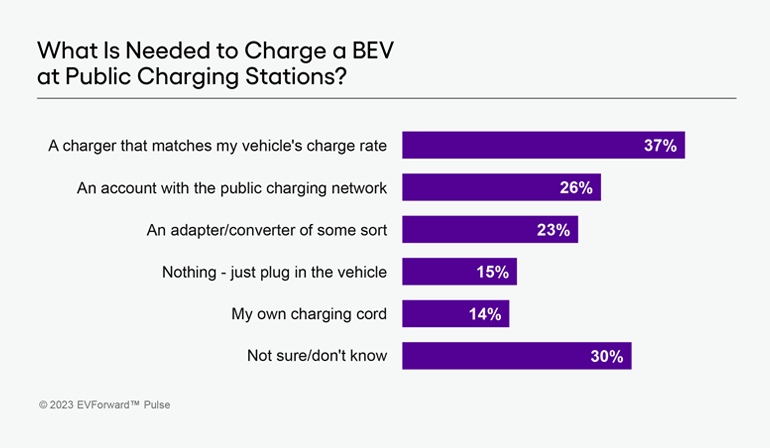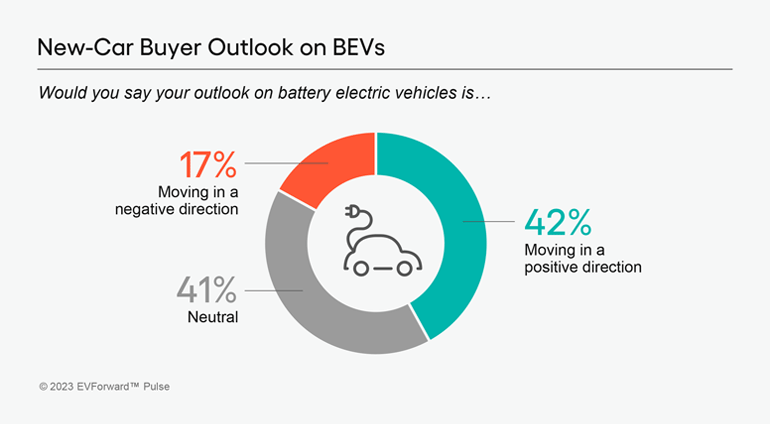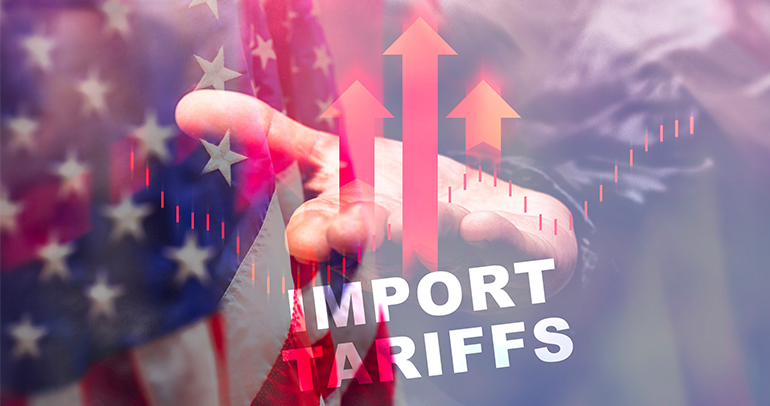
2023 was a big year for battery electric vehicles (BEVs), not only because more than one million BEVs sold for the first time in the US but also because the industry was wrestling with the facts that BEV adoption isn’t linear, there are different motivations for today’s BEV consumers than previous buyers, and the magnitude of needed investments doesn’t always create an immediate return.
Throughout the year, Escalent tracked key topics with our monthly EVForward Pulse surveys and newsletters, which is part of our broader EVForward research program on the next generation of EV buyers.
Here are our top four takeaways that made 2023 a seminal year for BEV adoption.
1. Mixed Outcomes on the Industry’s Adoption of NACS
Ford dropped perhaps the surprise of the year, announcing in May it would be adopting Tesla’s North American Charging Standard (NACS, now codified as SAE J3400) for its future BEVs. Other brands quickly followed suit and nearly the entire industry has subsequently announced the adoption of NACS.
Our July Pulse reported that consumers felt “excited,” “happy” and “intrigued” by these announcements and found that buyers are more likely to consider brands that are adopting NACS. Conversely, consumers are less likely to consider brands that haven’t adopted NACS. In general, consumers don’t like standard wars (think: VHS vs. Betamax or, more recently, lightning vs. USB-C), and they reacted favorably to automakers unifying around a standard for charging.

Despite this, we found that more than half of prospective BEV buyers would likely delay their purchase until the vehicle they want has the NACS port built in. This means that a substantial number of buyers would probably sit on the sidelines until 2025 model year vehicles are available late this year or early next year, dampening the pace of BEV adoption.
2. Hyundai’s Kevin Bacon Ad Wins the Super Bowl
In April, the Pulse examined the impact of Super Bowl ads on new-car buyers. Two-thirds of buyers reported watching the Super Bowl and about half recalled seeing car ads during the game. The Hyundai Ioniq 6 ad featuring Kevin Bacon and Jeep’s electric boogie ad best intrigued potential buyers, with 21% saying they’d want to learn more about the vehicles after seeing the ads.
However, out of the five BEV-related Super Bowl ads, Hyundai was the only one posting a higher percentage of viewers saying the ad made them more likely to consider a BEV than less likely to consider one. Aside from Kevin Bacon’s natural persuasiveness, this ad was effective because it focused on things prospective BEV buyers care about, namely range and charging speed. Competing Super Bowl ads weren’t as clear about what the vehicle offered or were implicitly or explicitly negative about BEVs. (e.g., RAM’s Premature Electrification ad).
3. Most Buyers Are Still “BEV Noobs”
Buyers overwhelmingly relate their expectations of owning BEVs to their experience with gas cars—it’s what they’ve always known. However, several aspects of BEV ownership differ quite substantially from gas car ownership, including how consumers would “fuel” the vehicle and maximize the vehicle range. Our June Pulse examined “BEV 101” and what the industry needs to do to help drivers understand the reality of owning a BEV.
With driving range a key factor in BEV consideration, the plurality (29%) of buyers look to EPA range ratings as the most accurate representation of a BEV’s range. Furthermore, more than half (54%) expect interstate conditions, driving 60+ mph, to be where they’re most likely to reach a BEV’s maximum range. These expectations create the conditions for a poor experience, as many manufacturers’ BEVs fail to meet their EPA range in highway driving conditions.
Charging is another area where consumers need help. Nearly one-third are unsure what they would need to charge a BEV at a public charging station. Additionally, the most-selected response of “a charger that matches my vehicle’s charge rate” isn’t entirely accurate given that BEVs can successfully use higher- or lower-powered chargers at charging stations. For example, a BEV that maxes out at 150 kW can use a higher-powered charger (e.g., 350 kW, though the vehicle will only charge up to 150 kW, limited by the vehicle) or a lower-powered charger (e.g., 50 kW, though the vehicle will only charge up to 50 kW, limited by the charger).

Buyers overwhelmingly want to learn about these topics when they first begin shopping and our May Pulse found that consumers are open to renting a BEV—even before they’ve started shopping for one—which presents a good learning opportunity. In fact, 63% of new-car buyers reported that there has been a time when their opinion of a vehicle brand has become more positive after renting.
4. Momentum Is Still Strong for BEVs
While several major automakers publicly expressed concern about a slowing rate of growth in BEV sales and concerns about the profitability of BEVs, buyers aren’t picking up on these concerns. In our December Pulse, 74% of consumers said that BEVs are growing in popularity (versus only 26% saying they’re declining). Additionally, 69% believe automakers are turning a profit on every BEV they sell.

Overall, two-and-a-half-times as many new-car buyers said their outlook on BEVs is moving in a positive direction compared with the 17% who said their outlook on BEVs is becoming more negative. This is backed by a historically high number of buyers we identified as EV Intenders (new-car buyers who are the most likely to purchase a BEV as their next vehicle) through our proprietary propensity model: a full quarter of the market is likely to shop for a BEV as their next vehicle.
What Will 2024 Bring?
Our January Pulse covered predictions from three Escalent experts for the coming year. Because the consumer is at the center of everything we do, we compared these predictions with consumer sentiment to see how well the predictions held up in the market. While Pulse subscribers get the full rundown, it turns out our predictions fared well in the face of consumer data.
February’s Pulse will examine the potential impact of Chinese OEMs entering the US market. With BYD taking the global BEV sales crown from Tesla as well as Chinese OEMs entering the European market in force and building a foothold in Mexico, it’s only time until China’s extremely price-competitive BEV offerings enter the US market.
If you’re interested in getting timely updates on the state of the BEV market, click below for more information on how your organization can subscribe to the EVForward Pulse.
About EVForwardTM
Data reported within come from Escalent’s EVForward monthly Pulse surveys conducted in April, May, June, July and December 2023 among a subset of the EVForward US database, a sample of more than 40,000 new-vehicle buyers age 18 to 80 with a primary vehicle model 2018 or newer and intending to purchase a new vehicle within the next five years. Data were weighted by age and gender to match the demographics of the new-vehicle buyer population and by vehicle segment to match current vehicle sales. The sample for this research comes from an opt-in, online panel. As such, any reported margins of error or significance tests are estimated and rely on the same statistical assumptions as data collected from a random probability sample. Escalent will supply the exact wording of any survey question upon request.
Note: This blog was updated on March 26, 2025.









